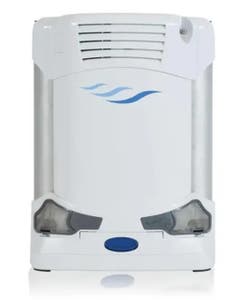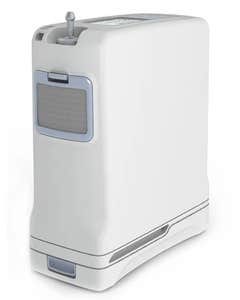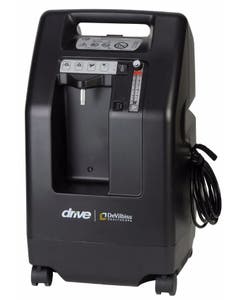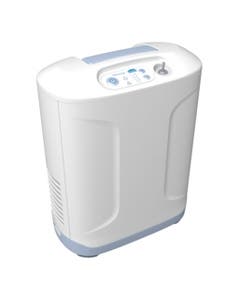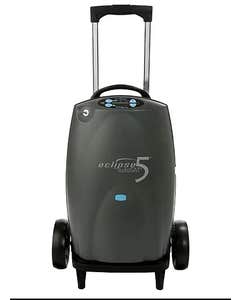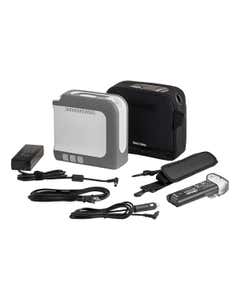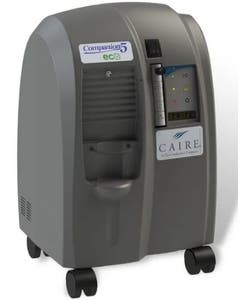
Emphysema is a chronic respiratory and lung condition that affects roughly 3 million Americans. It is one of the respiratory conditions classified as COPD and is most common among men between the ages of 50 and 70. While it is a progressive illness without a cure, it is entirely preventable. Understanding the cause, stages and treatment of emphysema gives anyone with a diagnosis the best information for making the best decisions about their health.
What Is Emphysema?
Emphysema is a respiratory illness in which the air sacs, or the alveoli, of the lungs become damaged. With this type of damage, the bronchial tubes collapse, trapping air inside of the lungs. However, the damaged air sacs prevent proper amounts of oxygen from entering the bloodstream. Emphysema causes shortness of breath, low blood oxygen levels and even reduces mental alertness.
What Are the Causes of Emphysema?
One of the most common causes of emphysema is smoking. Long-term exposure to tobacco gradually causes damage to the lungs in the form of irritated airways, excessive mucus production and damaged lung tissue. For most individuals, the cessation or avoidance of smoking will prevent the onset of this chronic lung disease.
While smoking is regarded as the primary cause for most emphysema patients, the disease can also begin with extended exposure to air pollution and airborne irritants within various environments.
What Are The 4 Stages of Emphysema?
The medical community uses the GOLD system to measure a patient’s ability to exhale air volume. GOLD stands for the Global Initiative for Chronic Obstructive Lung Disease, and these standards are used to determine emphysema staging.
- Stage 1 Emphysema: 80% air volume exhaled (mild)
- Stage 2 Emphysema: 50-80% air volume exhaled (moderate)
- Stage3 Emphysema: 30-50% air volume exhaled (severe)
- Stage 4 Emphysema: Less than 30% air volume exhaled (very severe)
Another method of determining severity and best course of treatment is referred to as the BODE method. This examines a patient’s body mass index, lung obstruction, breathlessness, and exercise capacity.
How to Diagnose Emphysema?
Doctors will look for the key signs of emphysema during an office visit:
- Low blood oxygen levels
- Wheezing and general difficulty breathing
- Increased levels of carbon dioxide in the blood
- Blue-tinged lips
Beyond the tell-tale signs and blood oxygen testing, a doctor may also conduct a pulmonary function test, which determines your air volume capacity while breathing. In advanced cases, X-rays and CT scans will also reveal lung damage.
How Can Oxygen Therapy Work to Treat Emphysema?
Oxygen therapy is one form of treatment for emphysema. By providing more oxygen to the lungs, oxygen therapy can increase blood oxygen saturation throughout the body. While not a cure, oxygen therapy helps improve breathing and reduces the debilitating symptoms of emphysema. For anyone with the disease, oxygen therapy can help you lead a more normal life.
If you have been diagnosed with emphysema and prescribed oxygen therapy, oxygen concentrators are a suitable option for treatment. You can find both portable and home oxygen concentrators at a low price at The Oxygen Concentrator Supplies Shop. Explore your options with our expert customer care team via phone at 888.941.1688 or via email at contact@oxygenconcentratorsupplies.com.
Reference:
- Cleveland Clinic. Emphysema. Accessed March 2021.
Emphysema is a chronic respiratory and lung condition that affects roughly 3 million Americans. It is one of the respiratory conditions classified as COPD and is most common among men between the ages of 50 and 70. While it is a progressive illness without a cure, it is entirely preventable. Understanding the cause, stages, and treatment of emphysema, like the use of an oxygen concentrator, gives anyone with a diagnosis the best information for making the best decisions about their health.
Emphysema Overview
Emphysema is a respiratory illness in which the air sacs, or the alveoli, of the lungs become damaged. With this type of damage, the bronchial tubes collapse, trapping air inside of the lungs. However, the damaged air sacs prevent proper amounts of oxygen from entering the bloodstream. Emphysema causes shortness of breath, and low blood oxygen levels and even reduces mental alertness.
What Are the Causes of Emphysema?
One of the most common causes of emphysema is smoking. Long-term exposure to tobacco gradually causes damage to the lungs in the form of irritated airways, excessive mucus production, and damaged lung tissue. For most individuals, the cessation or avoidance of smoking will prevent the onset of this chronic lung disease.
While smoking is regarded as the primary cause for most emphysema patients, the disease can also begin with extended exposure to air pollution and airborne irritants within various environments.
What are the Symptoms of Emphysema?
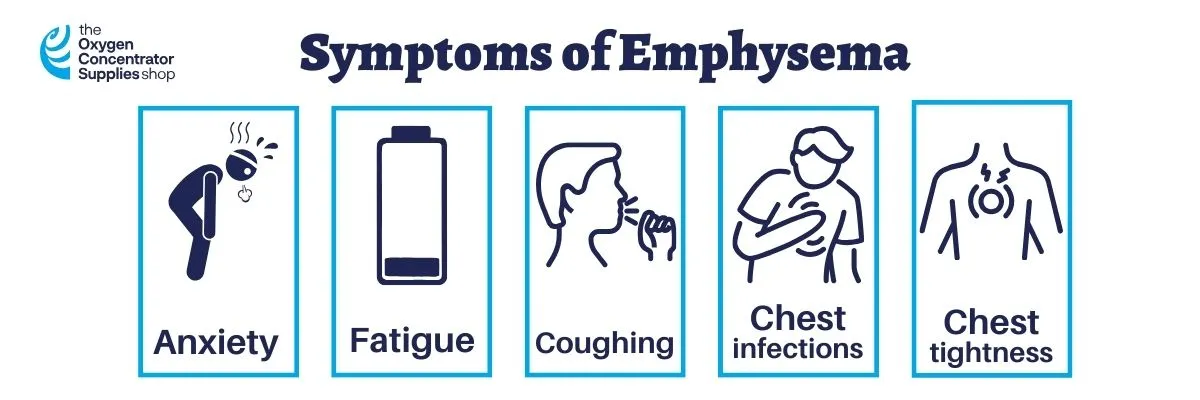

The following symptoms could be indicative of emphysema:
- Shortness of breath
- Breathlessness with exertion
- Fatigue
- Cough with phlegm production
- Susceptibility to chest infections
- Tightness in your chest
What Is The Difference Between COPD And Emphysema?
Emphysema is a type of COPD (chronic obstructive pulmonary disease). COPD is a group of lung diseases that make it hard to breathe and can get worse over time. Emphysema is considered "chronic" because it is an ongoing illness a person will have for the rest of their life. It is also considered "obstructive" because this illness is something that blocks the typical smooth flow of air in and out of the lungs.
Although there is no cure for any respiratory illnesses that fall under the category of COPD, there are many options for treating the symptoms to lessen their disturbance in your life.
What Is The First Sign Of Emphysema?
The first sign of emphysema is shortness of breath, which will gradually get worse if emphysema is not diagnosed and treated. You may find yourself first avoiding any activities that cause you to be short of breath, then you may even realize you are winded even while you are at rest. If you are feeling this way, it is not fair to yourself to continue living life in that state. Consider reaching out to your doctor for assistance.
What Does Emphysema Feel Like?
Emphysema will feel like you are not getting enough air and are having difficulty catching your breath, even if you are not doing a physical activity. You may also feel like you are suffocating becaue of the lack of oxygen. Because of this, your body will respond by trying to compensate and feeling like you have to breathe harder, quicker, and deeper.
What Are The 4 Stages of Emphysema?
The medical community uses the GOLD system to measure a patient’s ability to exhale air volume. GOLD stands for the Global Initiative for Chronic Obstructive Lung Disease, and these standards are used to determine emphysema staging.
- Stage 1 Emphysema: 80% air volume exhaled (mild)
- Stage 2 Emphysema: 50-80% air volume exhaled (moderate)
- Stage 3 Emphysema: 30-50% air volume exhaled (severe)
- Stage 4 Emphysema: Less than 30% air volume exhaled (very severe)
Another method of determining severity and best course of treatment is referred to as the BODE method. This examines a patient’s body mass index, lung obstruction, breathlessness, and exercise capacity.
What Is The Life Expectancy Of A Person With Emphysema?
Those who are diagnosed with emphysema can still continue living their daily life with proper treatment. Those with this illness can easily survive ten years or more with good habits, healthy lifestyle choices, and proper maintenance. However, if you are a person with emphysema but you also continue to smoke, you not only make your illness and symptoms worse, but you will also severely impact the duration of your life span.
Can Emphysema Be Prevented?
Since smoking is the main cause of developing emphysema, the best way to prevent this type of COPD is to stop smoking or not smoke at all. It is also recommended to avoid secondhand smoke, pollutants in the air, chemcial fumes, dust, and other lung irritants.
How to Diagnose Emphysema?
Doctors will look for the key signs of emphysema during an office visit:
- Low blood oxygen levels
- Wheezing and general difficulty breathing
- Increased levels of carbon dioxide in the blood
- Blue-tinged lips
Beyond the tell-tale signs and blood oxygen testing, a doctor may also conduct a pulmonary function test, which determines your air volume capacity while breathing. In advanced cases, X-rays and CT scans will also reveal lung damage.
How Can Oxygen Therapy Work to Treat Emphysema?
KOxygen therapy is one form of treatment for emphysema. By providing more oxygen to the lungs, oxygen therapy can increase blood oxygen saturation throughout the body. While not a cure, oxygen therapy helps improve breathing and reduces the debilitating symptoms of emphysema. For anyone with the disease, oxygen therapy can help you lead a more normal life.
If you have been diagnosed with emphysema and prescribed oxygen therapy, oxygen concentrators are a suitable option for treatment. You can find both portable and home oxygen concentrators at a low price at The Oxygen Concentrator Supplies Shop. Explore your options with our expert customer care team via phone at 888.941.1688 or via email at contact@oxygenconcentratorsupplies.com.



